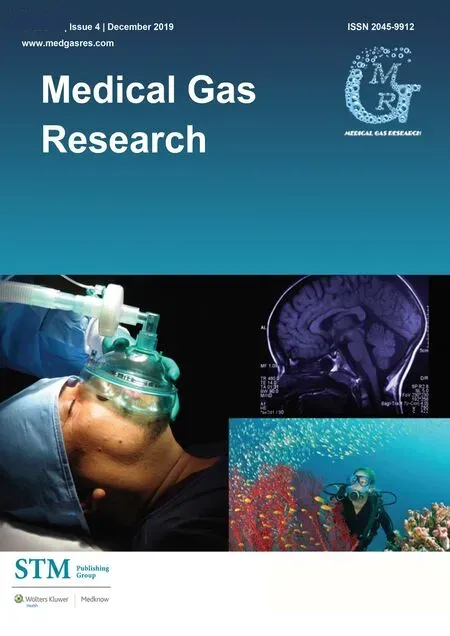Nitric oxide
Zhi-Lu Yang,Qiang Zhao,Qianjun He
Nitric oxide (NO),a small free radical,plays a regulative role in some important physiological processes and exhibits exceptional therapeutic potential in the field of cardiovascular homeostasis,immune response,bone metabolism,neurotransmission,and cancer.1-5NO was first discovered by Joseph Priestly in 1722 and was considered as an environmental pollutant.The in-depth biomedical research on NO was boosted just after the clarification of its impact on blood vessel function and the relationship between endothelial derived relaxing factor and NO in 1987.6In 1998,the Nobel Prize in Physiology or Medicine was awarded jointly to Robert F.Furchgott,Louis J.Ignarro and Ferid Murad,since then the NO became a star molecule and its research in the biomedical field was further developed.The design of NO-release materials,NO detection methods,NO-cell interaction and materials-cell-NO interaction has become the hot research points related to NO science.This special issue on NO research highlights recent advances in the points mentioned above.
For years,as a fundamental research,scientists have focused on two aspects associated with NO,that is,how to induce cells generate expected amount of NO,and how to regulate cell status on purpose by NO.In this special issue,Li et al.shows a promising application of Mg-Zn-Y-Nd as stent alloys by investigating the influence of its degradation behavior on NO release of vascular endothelial cells and find that the alloy degradation product concentration and the time of degradation had positive correlation for NO generation.Moreover,they also demonstrate the downregulation of interferon-γ in lymphocytes after NO treatment tumor infiltrating lymphocytes,which provides an immune perspective to employ NO for the treatment of autoimmune diseases.Meanwhile,researchers have developed various methods for NO delivery.For instance,Luo et al.loads ebselen,a molecule that could play the similar role as glutathion peroxidase (GPx-like)function,into micelles and are further assembled into a layerby-layer coating.Controllable catalytic generation of NO and favorable biological effects are gained based on such a delivery strategy.Except for this particular case of NO-releasing materials,Yang et al.take a brief introduction of latest achievements in the recent three years,involving the coatings which may mimic the vascular endothelium to treat atherosclerosis,the nanocarriers which aim to generate NO by a sustained way for anticancer,and the framework which modifies the prodrug more stably to apply to cardiovascular stent or tumor targeted drug mainly.Despite great advances in NO functional material design and application,the methods for quantifying NO concentration and its metabolites are also crucial to well know about its biological functions and effects.He et al.summarize various methods forin vitroandin vivoNO detection,and also introduces their merits and demerits in this special issue.
In general,this special issue on NO has covered research on cellular level,materials development and NO detection.Reports and reviews on NO presented in this issue will provide a further understanding about the real role of NO in cardiovascular diseases,immune disorders and cancer.
- Medical Gas Research的其它文章
- Revisiting the expanded use of hyperbaric oxygen therapy for treatment of resistant migraines
- The role of oxygen in cluster headache
- The role of medical gas in stroke:an updated review
- Numerical analysis of mechanical ventilation using high concentration medical gas mixtures in newborns
- Respiratory effects of occupational exposure to low concentration of hydrochloric acid among exposed workers:a case study in steel industry
- Nitric oxide detection methods in vitro and in vivo

